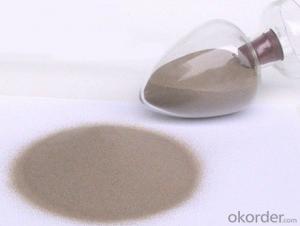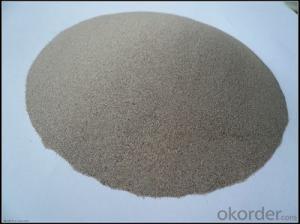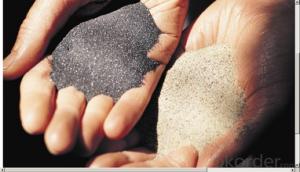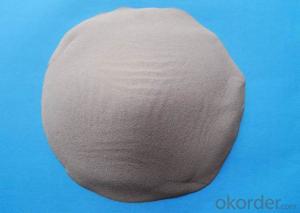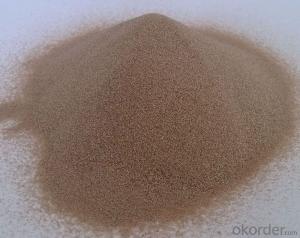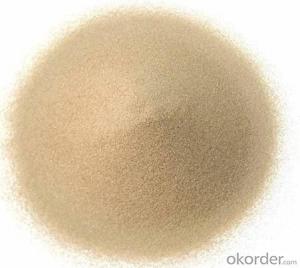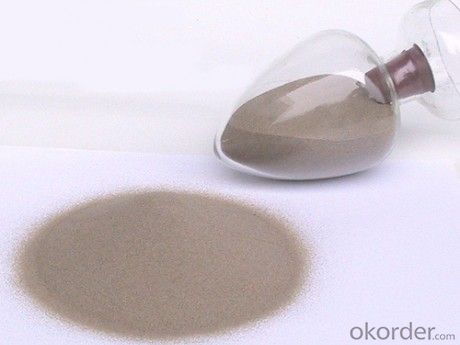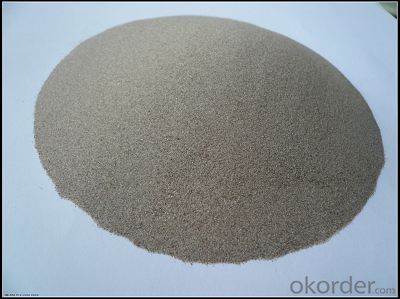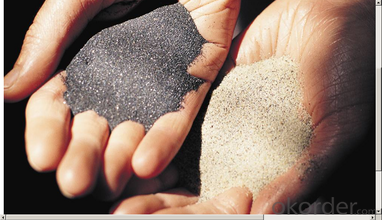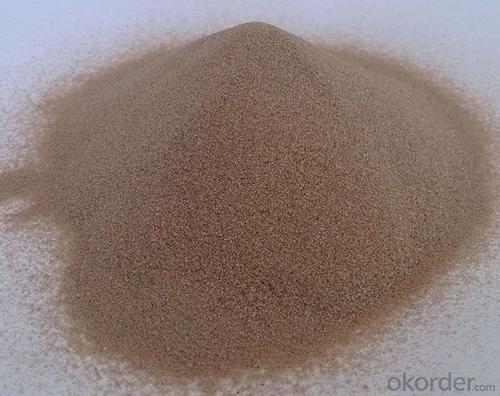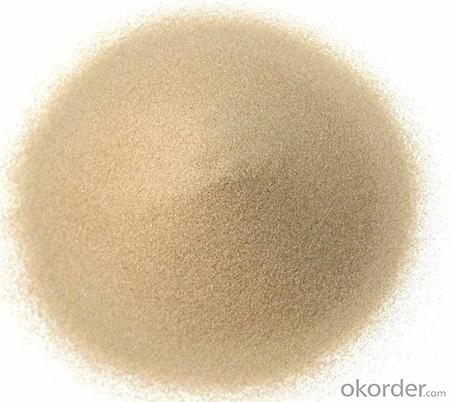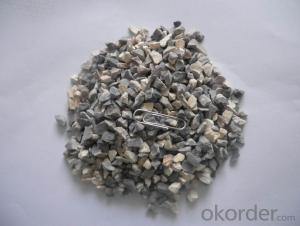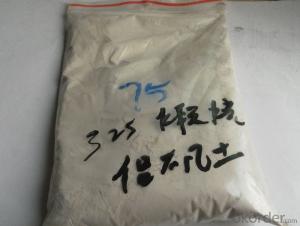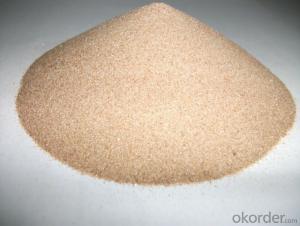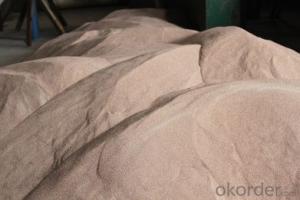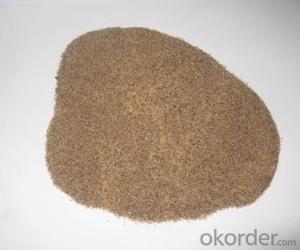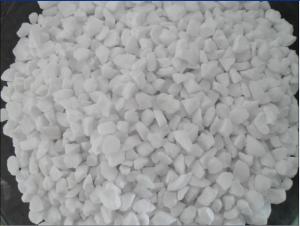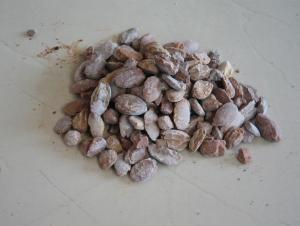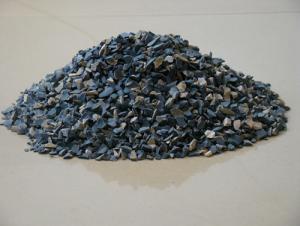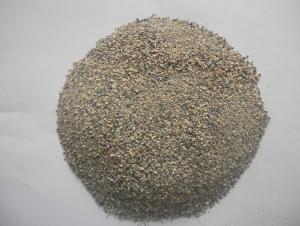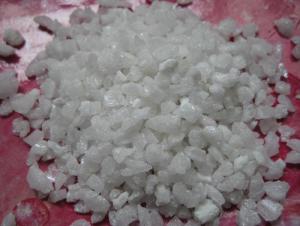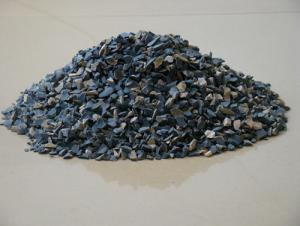Raw Materials for Refractory:High Purity Zircon Sand and Zircon Flour
- Loading Port:
- Tianjin
- Payment Terms:
- TT OR LC
- Min Order Qty:
- 25 m.t.
- Supply Capability:
- 3000 m.t./month
OKorder Service Pledge
OKorder Financial Service
You Might Also Like
High Purity Refractory Material/ Zircon Sand and Zircon Flour
1.Structure of Zircon Sand and Zircon Powder
We are offer zircon sand With Below Mention Descriptions: ZrO2 65 - 67 %. We are offer zircon sand With Below Mention Descriptions: ZrO2 65 - 67 %. Zircon is a remarkable mineral, if only for its almost ubiquitous presence in the crust of Earth. It occurs in igneous rocks as primary crystallization products, in metamorphic rocks and in sedimentary rocks as detrital grains.
Further, the mineral due to hardness, durability and chemical inertness, zircon persists in sedimentary deposits and is a common constituent of most sands.
2.Main Features of Zircon Sand and Zircon Powder
1.Item:zircon sand
2.Purity:66%
3.Mainly used in Ceramic Industry
4.Industry grade: ZrSiO4>99%
3.Main usage of Zircon Sand and Zircon Powder
The zircon sand is mainly used for fireproof materials (commonly called zirconium fireproof materials such as corundum bricks and zirconium fireproof fiber), sand for casting mould in casting industry (precision casting sand) and fine enamelware. In addition, the zircon sand is also used in the production of glass, metal (zirconium sponge) and zirconium compounds (zirconium dioxide, zirconium oxychloride, sodium zirconate, zirconium potassium fluoride, zirconium sulfate, etc.).
4. Zircon Sand and Zircon Powder Images
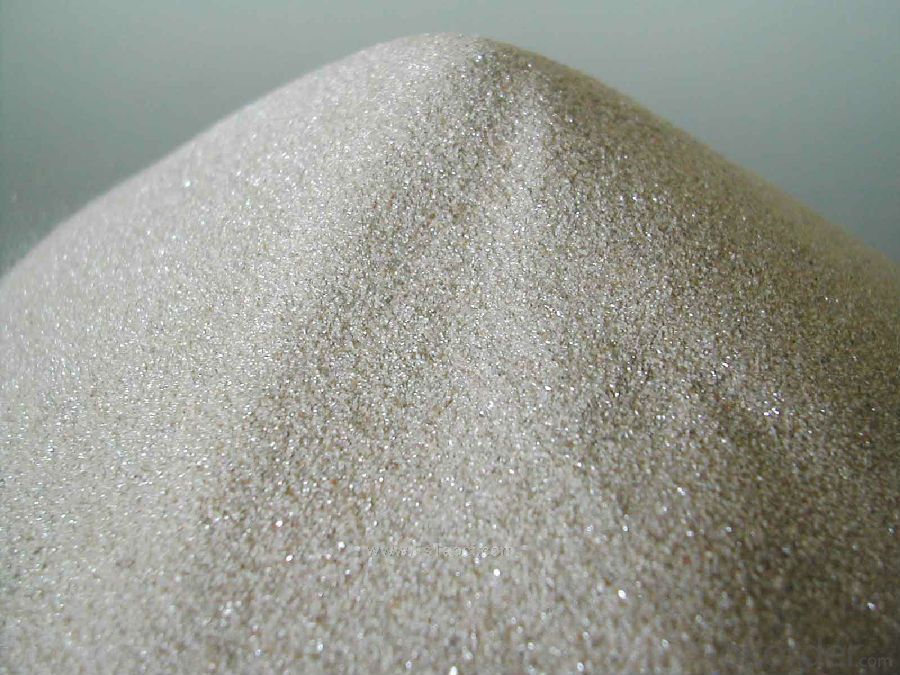
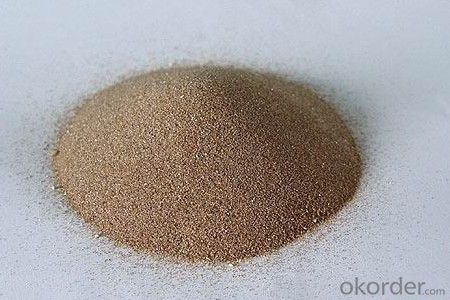
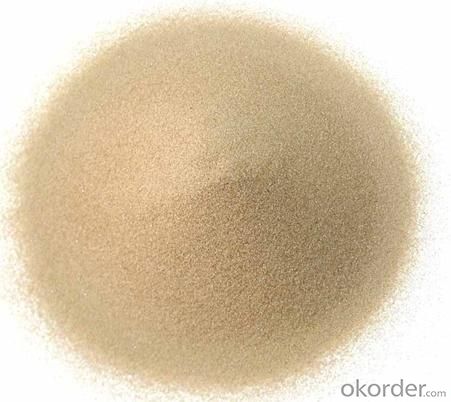
5. Zircon Sand and Zircon Powder Specification
Item | SY8 | SY6 |
Zr Content (ZrO2) | ≥66% | ≥65.5% |
Fe Content (Fe2O3) | ≤0.08% | ≤0.12% |
Ti Content (TiO2) | ≤0.10% | ≤0.10% |
6.FAQ of Zircon Sand and Zircon Powder
1). Q: Are you a factory or trading company?
A: We are a factory.
2). Q: Where is your factory located? How can I visit there?
A: Our factory is located in China. You are warmly welcomed to visit us!
3). Q: How can I get some samples?
A: Please contact me for samples
- Q: I wanna ask about the building insulation materials fire rating?
- the classfication of building insulation materials fire rating: 1. The thermal insulation material of level A combustion performance: Rock wool, glass wool, foam glass, foamed ceramics, foam cement, hole-closed perlite, etc. 2. combustion performance is level B1 insulation materials: Extruded polystyrene board (XPS) after special treatment / Special treatment of polyurethane (PU), phenolic aldehyde and gelatine powder polyphenyl granule 3, combustion performance is level B2 insulation material: Molded polystyrene board (EPS), extruded polystyrene board (XPS), polyurethane (PU), polyethylene (PE), etc.
- Q: Are the specification of fireclay bricks and ordinary clay brick the same?
- Do you want to know whether the specifications of fireclay bricks and ordinary clay brick are the same?
- Q: What is the requirement of refractory concrete for raw materials? What is the main principle of commercial mixing station?
- Refractory concrete generally divided into three categories: lightweight concrete (used in insulation); refractory concrete (for refractory temperature requirements are not very high position, and can withstand a certain air scour); heavy refractory concrete (flow with higher requirements for refractory temperature parts, and can withstand a certain intensity). Mainly depends on the design temperature and the use of parts.
- Q: How to count the construction costs of refractories?
- In winter, the temperature of the the fire-resistant masonry, fire-resistant plastic, sodium silicate, phosphoric?acid castable should be maintained above 5 ℃. Usually greenhouses in which heating facilities are installed to maintain the appropriate temperaturere for the construction environment should be erected in refractory masonry. The temperature around the construction site of the industrial furnace and refractory masonry shall not be lower than 5 ℃.
- Q: What are the main components of refractory cement?
- SiO powder is often used. Ultra-fine powder refers to less than 1 / zm particles which are made by hydrolysis of ethyl silicate or made from recycled dust in the smelting process of ferro-silicon alloy. Non-cement castable refractory are castable refractory material which contains no cement instead it relies on the coagulation and combination by adding ultra-fine powder or sol (see refractory castable), and it is an amorphous material with high activity. Silica sol is made through Ion-exchange of sodium silicate after Na ions are removed. The easiest method is to prepare by reaction of aluminum metal with hydrochloric acid or alchlor. It is a thermodynamically unstable system which has certain requirements for ultra-fine powder and sol. It is different from non-cement refractory castable, Cr2zrOz and etc. It has low impurity content, and can bond with itself, so it has good binding strength. Ultrafine powder used in non-cement castables are SiO2, Al2O3, Cr2zrOz, etc. Such recycled SiO2 powder has an average particle diameter of 0.5 pm, therefore when adding the gelling agent (electrolyte), it can coagulate and give the products some bonding strength. Non-cement castable refractory is made up of refractory aggregate and powder and it is round. Since the use of superfine powder or sol as binder. The size of sol particles are of 0.1 ~ 1 m. Non-cement refractory castable takes oxide or synthetic compound ultra-fine powder or oxide sol-gel which is similar to the chemical composition of material in tungsten castable. There are several ways to prepare alumina sol. The sol used are mainly alumina oxide and silica sol. The surface area is large, and it helps to improve high-temperature structural strength. Non-cement castable refractories rely on oxide ultra-fine powder or sol to coagulate and combinate. It is a refractory castable (also known as chemical bonding castable) which uses chemical binder instead of cement for combination.
- Q: who knows the fire resistant level of fireproof gypsum board ?
- The most commonly used ceiling decoration materials rates B1, including gypsum board, fibrous plaster, cement particle board, mineral wool sound-absorbing panels, glass wool decorative acoustic?panel?absorber, perlite decorating acoustic board, nonflammable plywood, nonflamable medium density fiberboard, mineral wool decorative board, flame retardant wood, aluminum foil composites, flame retardant phenolic plywood, aluminum foil glass fiber reinforced plastic composite materials. The fire gypsum board fire rating can reach A. Of course, many of the suspended ceiling gypsum board of inferior quality rates below B1. plasterboard is non-flammable B1 level products. There are introductions in Fireproof Specification of National Standard Building Interior Decoration Design. plaster board mounted on steel stud can be used as A level decoration materials. in accordance with the national fire safety rules on fire durance of walls and ceilings and other components. we can not simply say whether a piece of gypsum board can meet the requirements.
- Q: what are the types of piping insulation material fire?rating?
- according to China's national standard GB8624-97, the combustion performance of construction materials can be divided into several grades grade A: Incombustible building material: Almost no burning material. Class B1: nonflammable building material: nonflammable material has a good flame resistance effect. when it meet the open fire in the air or burnd at high temperature, it is difficult to spread quickly, and when the fire source is removed, the combustion stop immediately. Class B2: flammable building material: flammable material has a good flame resistance effect. when it meets open fire in the air or at high temperature, it will immediately burst into flames and easily cause fire spread, such as wooden column, timber roof truss, timber beam, and wooden stairs,ect.. Class B3: inflammable building material: No flame resisting effects, highly flammable, high fire risk. 2, external wall thermal insulation materials, in accordance with fire rating, can be divided into1) grade A combustion performance thermal insulation material: Rock wool, glass wool, foam glass, foamed ceramics, foam cement, hole-closed perlite ect.. 2) class B1 combustion performance insulation materials: Extruded polystyrene board (XPS) after special treatment / Special treatment of polyurethane (PU), phenolic aldehyde, gelatine powder polyphenyl granule, etc. 3) combustion performance of class B2 insulation material: molding polystyrene board(EPS), extruded polystyrene board (XPS), polyurethane (PU), polyethylene (PE), etc.
- Q: What are the differences between thermal?insulation?material and refractory?
- Just as its name implies, Thermal insulation means that it doesn't conduct heat instead it insulates heat inside, while refractory means resistance to high temperature and it will not be out of shape or damaged due to high temperature.
- Q: What are the material requirements of class A fire resistant door ?
- What are the material requirements of class A fire resistant door ?
- Q: Where is the development of refractory industry?
- The rapid development of continuous casting technology of its related @ China @4 honing refractories develop and increase in variety and quality, continuous development of refractories for the continuous casting billet continuous casting production and quality have a significant impact. Especially, the completion and operation of Baosteel have greatly promoted the technological progress of refractory materials in China, and the refractory materials for continuous casting have made great progress both in variety and in quality.
Send your message to us
Raw Materials for Refractory:High Purity Zircon Sand and Zircon Flour
- Loading Port:
- Tianjin
- Payment Terms:
- TT OR LC
- Min Order Qty:
- 25 m.t.
- Supply Capability:
- 3000 m.t./month
OKorder Service Pledge
OKorder Financial Service
Similar products
Hot products
Hot Searches
Related keywords
